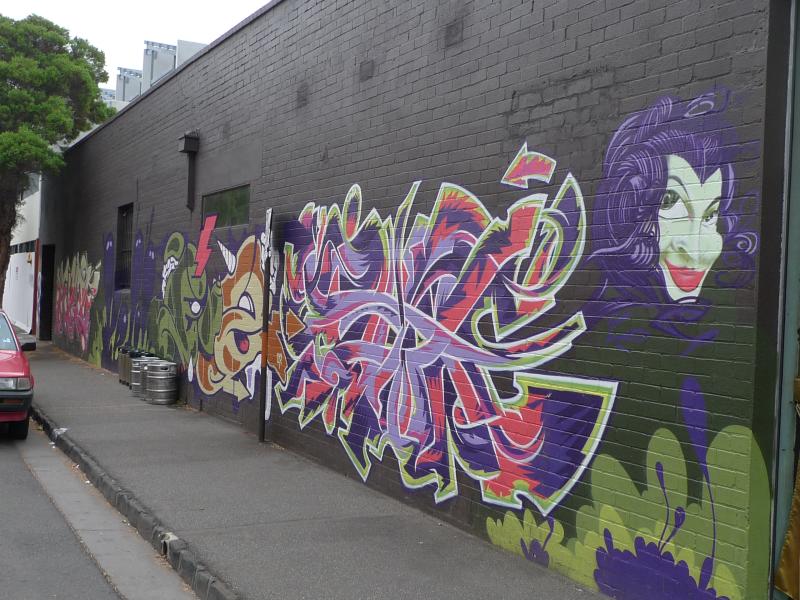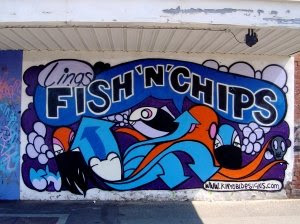
Street art along a wall in North Richmond
Being an avid runner, I often jog around the Parkville and Carlton areas near my university campus and chance upon street art along various walls, pavements and fences. Some of the air-brushed displays are aesthetically beautifully and probably the result of considerable and painstaking effort to create enduring works of art. Surprisingly, I don’t see that many acts of graffiti which are overtly anti-establishment or vandalistic in nature (or perhaps I haven’t been to those neighbourhoods yet).
While musing on this phenomenon, I chanced upon this interesting article by Mark Holsworth who reported on how several merchants in the Brunswick suburb of Melbourne (just a stone’s throw away from where I am putting up at Carlton) have engaged street artists to decorate their shopfronts. Holsworth highlighted two examples of this could be done tastefully. The first is a convenience store located at the Lygon/Brunswick area:

Courtesy of Mark Holsworth
The second is a Fish and Chips shop in Brunswick:

Courtesy of Mark Holsworth
According to Holsworth:
“Many businesses and private houses in Moreland commission street artists to paint walls with street facing; I looked at dozens on my bicycle ride. Many of these works have lasted for years, even decades: Jamit’s coffee cup, the first two colour stencils I ever saw, is still on the wall of a house along the Upfield train line a decade later. The piece with the anarchist robot on the side of a terrace house near Moreland station has been up for many years. The owners of the terrace house have had the advertising billboard removed preferring street art to advertising.”
I think that its a great idea to use legal graffiti for marketing and branding purposes provided they are done with care. Some of the more practical reasons are as follows:
1) To reduce the occurrences of tagging (or unwanted graffiti) and perhaps the sticking of unwanted posters and billboards.
2) As a means of increasing consumer attention, albeit in an aesthetically pleasurable way.
3) Better engage nascent street artists and provide a legal means of livelihood for them, while being seen as being more plugged into street culture.
Retail businesses should strive to work with artists to promote their shops, depending of course on the legal frameworks that operate in specific cities or neighbourhoods. Legal street art that is purposeful and meaningful can help increase your establishment’s “hip” factor and help to draw younger crowds that shun the ordinary and mundane. Of course, one man’s meat may be another man’s poison, and such practices need to be molded by the expectations that one’s customers have of one’s business.

A very interesting opinion piece you have written and coming from a marketers background one has to ask with graffiti being illegal in every state in Australia and costing hundreds of millions of dollars of tax payers money how can any of us call it ‘art’?
The program in Moreland you mention seems to have one fault and that is to monitor the surrounding areas once these businesses have undertaken this kind of activity and who will pay for any clean up costs for other property owners who will end up getting tags on their properties, you, council, the business owner?
As a marketer would you consider it offensive if this on any material you developed for a client?
Anonymous has several facts wrong. Illegal graffiti removal costs what the anti-graffiti lobby claim is a number and what they can pressure local councils to pay to have it removed. This cost is increased by the anti-graffiti lobby who want zero-tolerance and all graffiti removed. If something costs the tax payers money does not disqualify it from being art, it may be art even if the majority of people hate it. Finally anonymous has not been to the location and looked at the surrounding areas, so this part is just opinion. I have looked at the surrounding area and there is no evidence that legal graffiti in Moreland increases or decreases illegal graffiti.
Poorly informed opinions like these cost the tax payer millions of dollars more a year than graffiti removal.